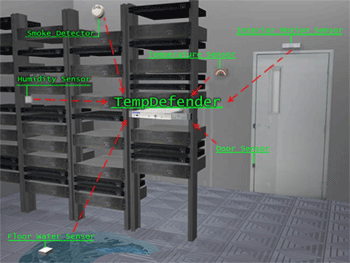Download our free Monitoring Fundamentals Tutorial.
An introduction to Monitoring Fundamentals strictly from the perspective of telecom network alarm management.
1-800-693-0351
Have a specific question? Ask our team of expert engineers and get a specific answer!
Sign up for the next DPS Factory Training!

Whether you're new to our equipment or you've used it for years, DPS factory training is the best way to get more from your monitoring.
Reserve Your Seat TodayThe increase in telecommunications traffic in the last few years has been tremendous. It's being driven especially by the increasing demand for internet video streaming.
Recent studies have found that (unsurprisingly) over 80% of the power consumed at telecom sites is used for network infrastructure. The majority of that power is used for your cooling system (HVAC).

Fortunately, there are clever techniques you can use to reduce the amount of electricity you consume for cooling your data center:
No matter how efficient or inefficient your cooling system is, you have to know that it's working. Any outage opens up the risks of overheating: thermal shutdowns & equipment damage. You'll increase your costs as you shut down your revenue.
Considering the costly dangers of unseen HVAC failures on your budget, there's no excuse for not monitoring. Compared to the cost of an outage, it's a no-brainer purchase decision.
The TempDefender G2 keeps tabs on all the environmental levels that could have a damaging effect on your equipment. The 8 discrete alarms on the back panel of the TempDefender monitor your dry contacts, such as motion sensors, UPS, smoke detectors, flood sensors, AC and room entry. The 4 D-wire sensor inputs on the back panel allow you to monitor up to 32 analog sensors, giving you the analog capacity to keep on top of environmental conditions at your site.
If you're looking for equipment that can work in conjunction with your network monitoring to cycle and monitor HVAC functions, then the HVAC Interface from DPS Telecom is right for you. This device was designed to work with the NetGuardian 832A G5 equipped with 4 temperature sensors and the special HVAC software designed for the device.
D-Wire sensors are a way to track environmentals in your server room, telecom shelter, PBX closet, or data center using convenient daisy-chained sensors. You will be alerted the second your temperature gets too high or the humidity level in your site reaches an unacceptable level.With D-Wire sensors, you don't have to worry about analog capacity on your RTUs, tangled masses of sensors at your RTU, or even the trouble of wiring analog connectors.